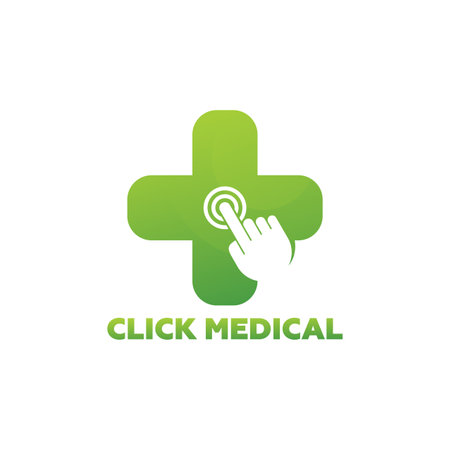1. Understanding Insurance Options for Depression Programs
When seeking help for depression in the United States, understanding your health insurance options is a key first step. The U.S. has a variety of insurance choices, each with its own rules about mental health coverage and access to depression treatment programs.
Types of Health Insurance in the U.S.
There are three main types of health insurance in the U.S.: private insurance, employer-based coverage, and public options like Medicaid and Medicare. Each type offers different levels of support for mental health services, including therapy, medication, and specialized depression programs.
Overview of Insurance Types and Mental Health Coverage
| Insurance Type | Description | Mental Health/Depression Coverage |
|---|---|---|
| Private Insurance | Bought directly from an insurance company or through the Health Insurance Marketplace. | Most plans must cover mental health services, including therapy and medication, due to federal law (ACA), but coverage details vary by plan. |
| Employer-Based Coverage | Provided by employers as part of employee benefits. | Usually covers mental health care; specifics depend on the employer’s chosen plan. Check with HR for details on depression program access. |
| Medicaid | State and federally funded program for low-income individuals and families. | Covers a wide range of mental health services. Benefits differ by state, but most include therapy and medication for depression. |
| Medicare | Federal program mainly for people age 65+ or with certain disabilities. | Covers outpatient and inpatient mental health care, including depression treatment. Parts A and B offer different benefits; Part D covers medications. |
How These Options Relate to Depression Treatment
No matter which insurance type you have, it’s important to check what mental health services are included. Some plans may require referrals from a primary care doctor or have preferred provider lists. Others might limit the number of therapy sessions per year or only cover certain medications. When exploring depression programs or starting treatment, always verify your coverage details with your insurance provider or benefits coordinator to avoid unexpected costs.
2. Eligibility and Application Process for Medicaid
Understanding Medicaid Eligibility for Depression Programs
Medicaid is a state and federally funded health insurance program for people with limited income, including those seeking treatment for depression. However, the eligibility requirements can vary from state to state. Here’s a basic outline of who may qualify:
| Eligibility Category | General Requirements | State Variations |
|---|---|---|
| Income Level | Must meet income limits based on family size (usually at or below 138% of the federal poverty level) | Some states have higher or lower limits; check your state Medicaid site |
| Age Group | Covers children, some adults under 65, pregnant women, elderly, and individuals with disabilities | Expansion states cover more low-income adults |
| Citizenship Status | U.S. citizens or qualified non-citizens (like lawful permanent residents) | Emergency coverage available in some cases regardless of status |
| Disability Status | People diagnosed with a disability, including mental health conditions like depression, may qualify even if income is slightly higher | The definition of disability may differ by state |
Steps to Apply for Medicaid Coverage for Depression Treatment
- Check Your State’s Rules: Visit your state’s Medicaid website or Healthcare.gov Medicaid page to review eligibility criteria and covered mental health services.
- Gather Required Documents: You’ll need ID, proof of income (pay stubs or tax returns), Social Security number, and documentation of citizenship or immigration status.
- Complete the Application: Apply online through your state’s portal, by mail, in person at a local Medicaid office, or over the phone.
- Select a Plan: In many states, you’ll pick a managed care plan that covers mental health and depression treatment services.
- Receive Approval: After review, you’ll get a notice about your coverage start date and how to access providers specializing in depression care.
- Find a Provider: Use your plan’s directory to find therapists, psychiatrists, or clinics that treat depression and accept Medicaid.
Special Considerations: State Differences and Mental Health Coverage
- Mental Health Parity: Federal law requires Medicaid plans to cover mental health services at levels comparable to physical health benefits. States can choose specific depression treatments offered.
- Pediatric vs. Adult Services: Some states offer more comprehensive mental health support for children and teens than adults.
- Treatment Options: Coverage may include counseling, medications (like antidepressants), inpatient or outpatient programs—but availability varies by state.
- No Waiting Lists: For crisis situations related to depression (such as suicidal thoughts), most states provide immediate access to evaluation and emergency care.
- Simplified Renewal: Many states have streamlined annual renewal processes so you don’t lose coverage while receiving ongoing depression treatment.
If You Need Help Applying
If you’re feeling overwhelmed by the application process—especially while coping with depression—many states offer free assistance through local community health centers, social workers, or navigators trained to help you sign up and find mental health resources.

3. Accessing Medicare for Depression Treatment
Understanding Medicare Mental Health Coverage
Medicare is a federal health insurance program for people age 65 and older, and also for certain younger individuals with disabilities. If you or a loved one needs depression treatment, it’s important to know what mental health services are covered and how to get started.
Main Medicare Coverage Options
| Medicare Part | What It Covers |
|---|---|
| Part A (Hospital Insurance) | Inpatient care in hospitals, including psychiatric hospitals, if you need to be admitted for depression or other mental health concerns. |
| Part B (Medical Insurance) | Outpatient mental health services such as therapy sessions, doctor visits, screenings, and some medications. |
| Part D (Prescription Drug Coverage) | Covers many medications prescribed for depression, depending on your plan’s drug list (formulary). |
| Medicare Advantage (Part C) | Private plans that include all benefits of Parts A and B, often with added coverage like prescription drugs, vision, and dental. These may have different rules for accessing mental health care. |
Who Qualifies for Medicare?
- Adults 65 years or older
- Younger individuals with qualifying disabilities (such as receiving Social Security Disability Insurance for at least 24 months)
- People with End-Stage Renal Disease (ESRD) or ALS (Lou Gehrig’s disease)
Required Documentation
To access depression programs through Medicare, you’ll need:
- Your Medicare card and proof of enrollment
- A doctor’s referral or prescription for mental health treatment
- Records of prior mental health diagnoses (if available)
- Insurance information for any supplemental coverage you may have (like Medigap or Medicaid)
Recommended Steps to Get Started
- Check Eligibility: Confirm you qualify for Medicare based on age or disability status.
- Select Your Plan: Decide between Original Medicare or a Medicare Advantage plan. Compare coverage options for mental health services.
- Find Providers: Use the official Medicare website to search for doctors, therapists, and clinics that accept Medicare.
- Schedule an Appointment: Contact your chosen provider to book an evaluation or therapy session. Bring your documentation to your first visit.
- Understand Costs: Ask about copays, deductibles, and what services are fully covered. Some preventive screenings may have no out-of-pocket cost under Part B.
- If You Need Help: Call 1-800-MEDICARE or contact your local State Health Insurance Assistance Program (SHIP) for free guidance.
Mental Health Services Commonly Covered by Medicare Part B
- Individual and group therapy sessions
- Psychiatric evaluations and medication management
- Depression screenings (once per year)
- Certain telehealth appointments
4. Navigating Prior Authorization and Out-of-Pocket Costs
Understanding Key Insurance Terms
When seeking depression treatment through insurance, its important to understand some common processes and terms that can affect your access and costs. Here are a few you’ll often encounter:
| Term | What It Means |
|---|---|
| Prior Authorization | Your doctor needs approval from your insurance before certain medications or therapies are covered. |
| Co-pay | A fixed amount you pay for each visit or prescription, usually due at the time of service. |
| Deductible | The amount you need to pay out-of-pocket each year before your insurance starts covering costs. |
| Out-of-Pocket Maximum | The most you have to pay for covered services in a year; after this, your insurance covers 100% of costs. |
Dealing with Prior Authorization
If your depression treatment plan includes medication or therapy that requires prior authorization, your provider will usually submit paperwork to your insurer. Sometimes, this process can take days or weeks. To speed things up:
- Ask your provider’s office if they have a dedicated staff member for insurance paperwork.
- Call your insurance company to check the status of your authorization.
- If denied, ask about the appeal process—you may still be able to get coverage.
Tips to Minimize Out-of-Pocket Expenses
Treatment costs can add up quickly. Here are some tips to help keep expenses lower while getting the care you need:
- Use In-Network Providers: Services from providers in your insurance network typically cost less than out-of-network care.
- Ask About Generic Medications: Generic drugs for depression are usually much cheaper than brand names and are often just as effective.
- Check for Sliding Scale Fees: Some clinics offer reduced rates based on income, especially if you don’t have full coverage.
- Review Your Plan Benefits: Call your insurer or use their online portal to see exactly what mental health services are covered, so there are no surprises.
- Track Your Deductible: If you’re close to meeting your deductible, scheduling additional treatments within the same calendar year may save money overall.
- Explore Assistance Programs: Some pharmaceutical companies and non-profits offer financial help for medications and therapy.
Sample Out-of-Pocket Cost Comparison Table
| Treatment Option | Estimated Co-pay (In-Network) | Estimated Co-pay (Out-of-Network) |
|---|---|---|
| Counseling Session | $20–$40 per visit | $60–$120 per visit |
| Generic Antidepressant Prescription (Monthly) | $10–$15 | $30–$50 |
| Name Brand Medication (Monthly) | $30–$50 | $80–$150 |
If You Have Medicaid or Medicare
If you’re enrolled in Medicaid or Medicare, many preventive depression programs and basic treatments are covered with little or no co-pay. However, certain specialists or newer treatments might still require prior authorization. Always check your plan’s specific coverage details or speak with a benefits counselor for guidance.
5. Finding Support and Advocacy Resources
When dealing with insurance, Medicaid, or Medicare for depression programs in the U.S., it’s easy to feel overwhelmed. Luckily, there are many national and local organizations ready to help you understand your rights, navigate the system, and get access to care. These resources can answer your questions, provide guidance, and even advocate on your behalf if needed.
National Organizations and Hotlines
| Name | How They Help | Contact Info |
|---|---|---|
| NAMI (National Alliance on Mental Illness) | Provides education about insurance coverage, patient rights, local support groups, and advocacy for mental health services. | Helpline: 1-800-950-NAMI Website: nami.org |
| Mental Health America (MHA) | Offers tools for understanding insurance options, screening tools, and information on accessing depression care through Medicaid/Medicare. | Website: mhanational.org |
| SAMHSA (Substance Abuse and Mental Health Services Administration) | Operates a national helpline and provides resources for treatment facilities that accept Medicaid/Medicare. | Helpline: 1-800-662-HELP Website: samhsa.gov |
| The Depression and Bipolar Support Alliance (DBSA) | Connects people with peer support groups and guides for navigating insurance barriers. | Website: dbsalliance.org |
Local Resources and State Agencies
Your state’s Department of Health or Department of Human Services can connect you with local mental health offices. These offices often have specialists who can walk you through applying for Medicaid or using Medicare benefits for depression treatment. Many states also have ombudsman programs—these are independent advocates who help resolve issues between patients and insurance companies or government programs.
How to Find Local Help:
- Visit your state government website: Search for “behavioral health” or “mental health services.”
- Call 211: This free service helps you find local resources for mental health care, financial assistance, and more.
- Check with community health centers: These clinics often help patients apply for Medicaid and find affordable care.
Understanding Your Rights as a Patient
You have the right to receive mental health care under federal laws like the Mental Health Parity and Addiction Equity Act (MHPAEA). This means insurance companies must cover mental health conditions like depression the same way they cover physical illnesses. If you believe your rights are being violated, advocacy groups can help you file appeals or complaints.
Key Advocacy Groups for Patient Rights:
- The Legal Action Center: Offers legal help related to insurance denials for mental health care. (lac.org)
- The Center for Medicare Advocacy: Provides guidance on Medicare rights and appeals. (medicareadvocacy.org)
- Your State’s Protection & Advocacy Agency: Each state has one—search “P&A agency [your state]”. They help protect the rights of people with mental illness.
If You Need Immediate Help:
If you’re struggling with depression right now, don’t wait—call or text the Suicide & Crisis Lifeline at 988. Someone is available 24/7 to listen and guide you to local help.


